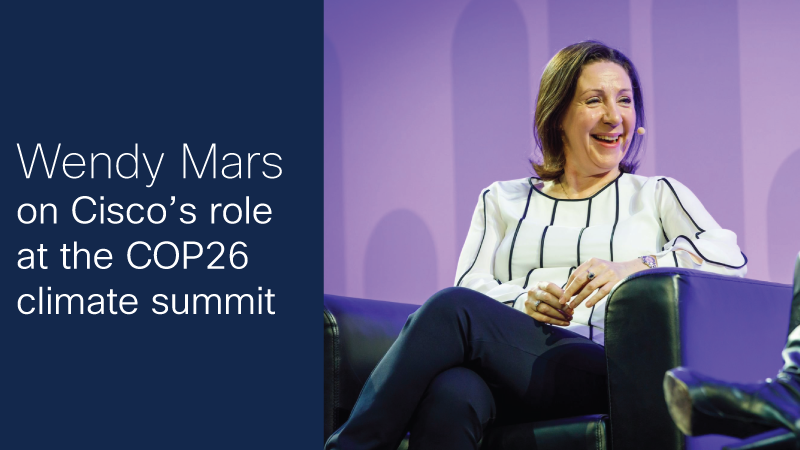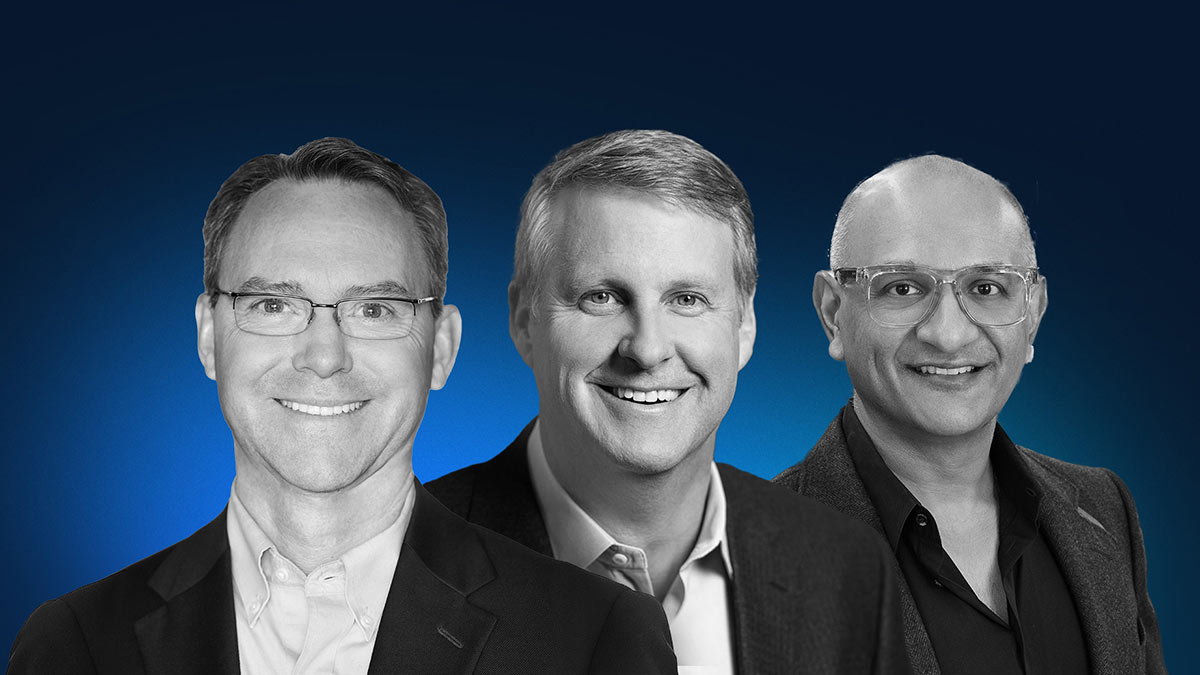Climate change is no longer a debate; it’s a crisis.
That’s why former U.S. Secretary of State John Kerry called the COP26 summit our “last best chance” for serious action on climate change.
This year’s event will bring representatives from more than 200 nations and other organizations to Glasgow, Scotland, from Oct. 31 through Nov. 12. And after missing 2020 due to the COVID 19 pandemic, the summit presents an overdue opportunity to reach international agreements on slashing greenhouse emissions — before it’s too late.
In this interview, Wendy Mars, president of Cisco’s Europe, Middle East, Africa and Russia region (EMEAR), discusses the company’s partnership with COP26, and how Cisco is leveraging its own technology and influence to battle the climate crisis.
Q. Thank you for joining me today, Wendy. This year, COP26 has taken on an elevated sense of urgency. Do you believe it can drive the level of change that we need?
A. This is such an important moment. Now is the time for actions, not just words.
More than ever there is a strong passion and desire for the citizens of the world to stand up and do something as a collective. Given some of the extraordinary weather conditions people are experiencing — with devastating floods, droughts, and temperatures — the debate over whether climate change is real is over. But it’s really important that guidance is given. And that people understand what their contribution is — as governments, organisations and citizens.
Q. What role can Cisco play at COP26?
A. COP26 is broadly recognized as being home to the most important climate negotiations to date. There are millions of incremental changes to be made as we build a sustainable future and we believe there is a twin transition underway, one that is both green and digital.
As global innovators we can influence and clearly articulate how technology can be part of the solution. I think that’s critical because innovation, at speed and at scale, can help enable an economically viable solution for all our futures.
As proud partners of COP26, Cisco will provide the technology to connect both those on-site in Glasgow, and permitted registered delegates who are unable to be there in person. This means that at a time when international travel remains uncertain, technology is able to unite the most influential minds to collaborate and define the path forward.
Q. Decisions made about the environment will affect everyone and the conversations should therefore harness a breadth of viewpoints and expertise. Can you tell us more about the tech that will make the conversations and decision-making at COP26 inclusive?
A. For those in Glasgow, Cisco’s networking technology will provide connectivity across the whole venue. For those joining virtually, almost all of the 3,000 anticipated physical sessions at COP26 will include a digital component, which we’re proudly supporting with Webex, in close collaboration with our partner ITGL.
A customised version of Legislate for Webex, which is purpose built for policymakers, will support secure, hybrid discussions during the event. When debates heat up, delegates will be able to spontaneously set up breakout discussions and in recognition of the diverse audience, there will be live translation and closed captioning within Webex no matter where a delegate joins from.
And, most importantly, the technology will ensure that everyone has a voice at the table and will literally ensure that whether a given policy maker is in the room or not, every vote is counted.
Q. Cisco has implemented climate and sustainability initiatives on multiple fronts. What really stands out for you?
A. There is always so much more to be done. People can feel overwhelmed by the complexity of the challenges, but we can show that it’s possible to be hopeful, by taking tangible steps.
I'm really excited that we’ve publicly declared our ambitions to reach net zero for greenhouse gas emissions for ourselves by 2025 and all those with whom we collaborate around the world by 2040. And one of the strategic elements in that plan is around the circular economy and how we embed that into every single thing we do.
We have an incredibly thoughtful use of renewables as an organization. And if we think of the innovation with the Silicon One chip and what that means for the reduction of the footprint of the technology, the overall energy savings, and its powerful capabilities, it’s really significant. Hybrid work is another critical pillar to sustainability.
And we can truly lead the way with our technology and own work force on how we bring hybrid work to life. It’s also important to note that we have recently joined the EU’s Green Digital Coalition; developing innovative solutions and contributing to the development of guidelines and recommendations for the deployment of green digital solutions in different sectors.
Q. You mention the circular economy which will certainly be a big underlying theme at COP26. What has circular design changed in the way Cisco runs its business?
A. When we think about circular design at Cisco, it is an approach that takes us far beyond just making and delivering products. Managing and protecting the world’s finite resources efficiently is about harnessing the value of an object or commodity throughout its entire lifecycle; potentially within multiple products and uses, and probably for multiple users over time.
The circular economy is good for business too. For global tech companies like ours, this is an opportunity to create some genuinely innovative tech which designs out waste and pollution from the beginning and uses the products and materials we already have for longer.
We are very much aware of the need to shrink the tech industry’s carbon footprint and so when Cisco makes and sells something, we expect to see it again when our customer is finished with it. We don’t charge for returns and we reuse or recycle 99.6% of the products we get back. We also launched the ‘Send IT Back ’app where you can take photos of your old tech and arrange for it to be collected for free to make it easy for any Cisco customer to proactively choose to be a part of the circular economy.
Q. Climate change brings enormous challenges. But you are clearly an optimist, and a believer that bold change is still possible.
A. It’s so incredibly important for all of us to be optimistic, because without hope there’s nothing. The spirit and the attitude are so important. But it’s also important to go beyond loose statements that make good headlines. We need the due diligence, the detail, the measurement. We need to draw a line in the sand and say ‘this is what we’re going to do’. I want businesses and governments to be clear in the details in the coming weeks and, again, to be clear on the guidance that they give.
Organisations can lead the way as change agents. There’s power in the collective voice. Cisco, the tech industry and the private sector more broadly, can play significant roles in forging a path towards a sustainable and inclusive future. I know at Cisco we have that clarity of vision, for the pathway we can take together. Because this is the time for action not just words, and all of us need to play a role.
###




